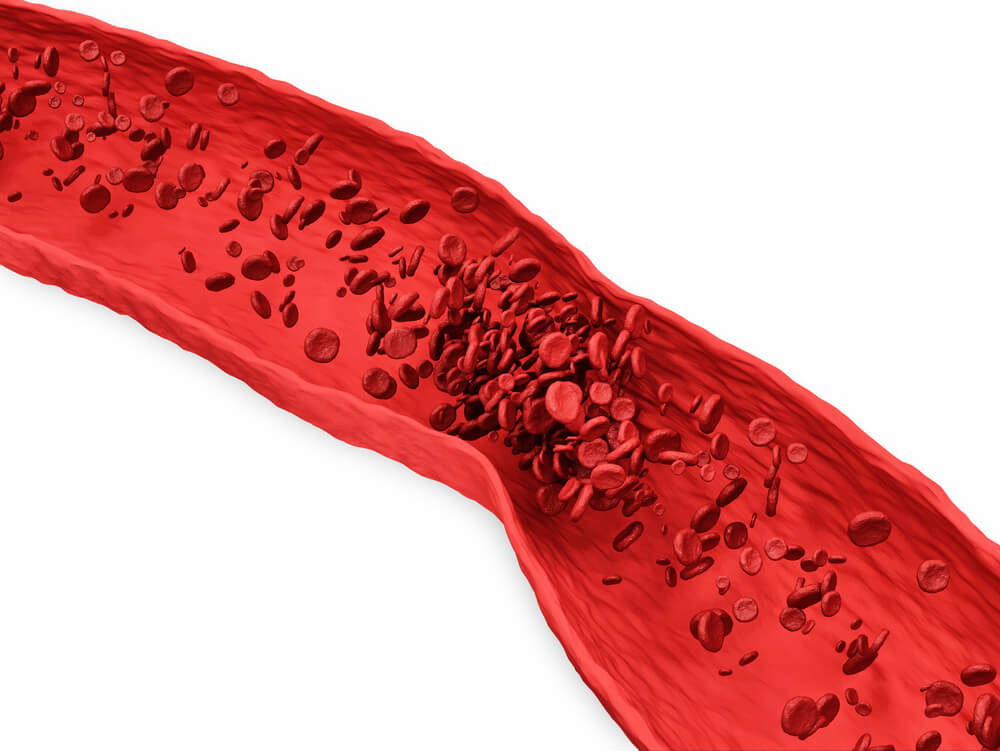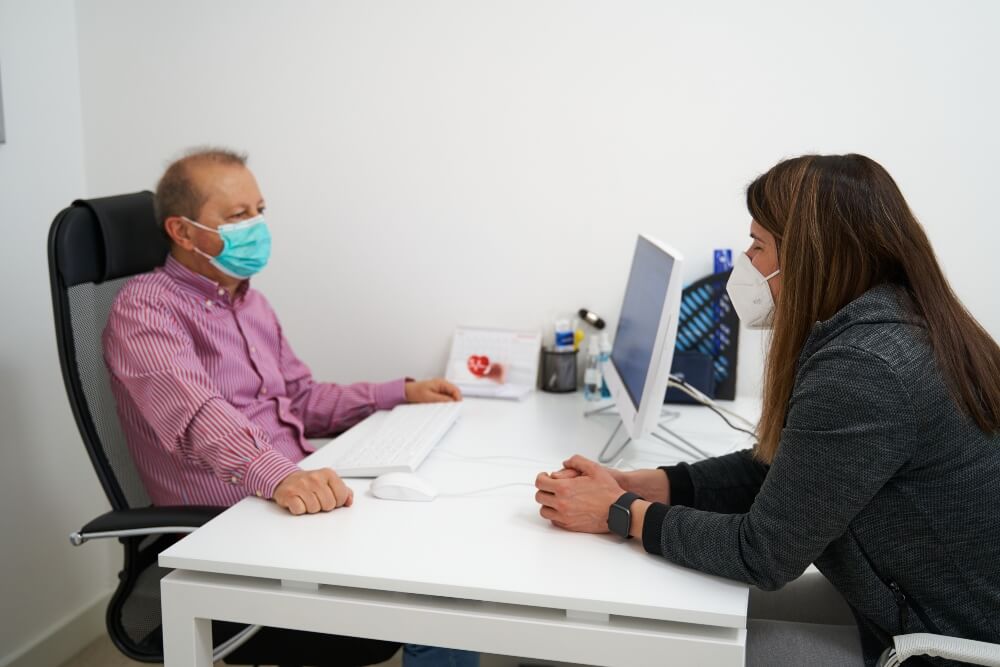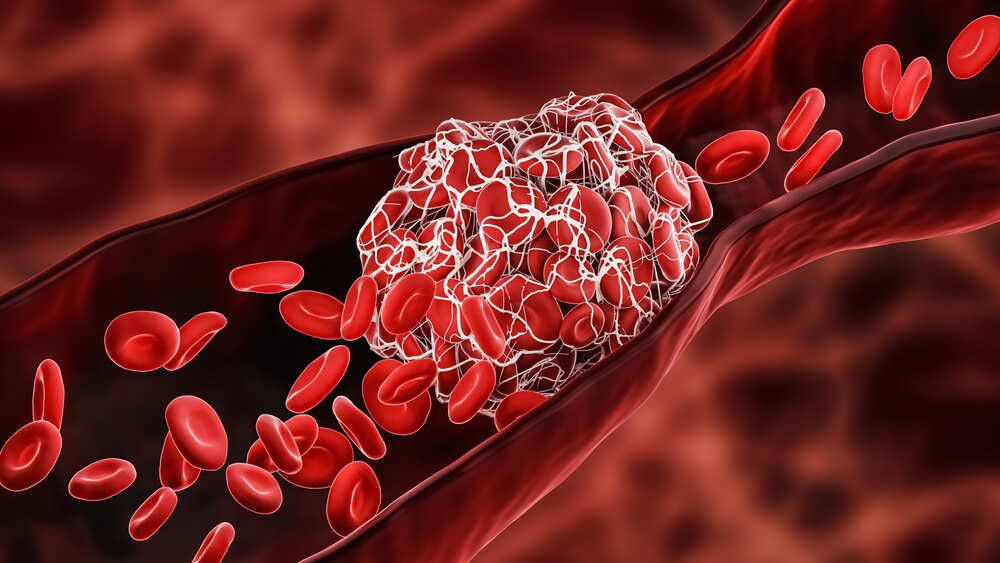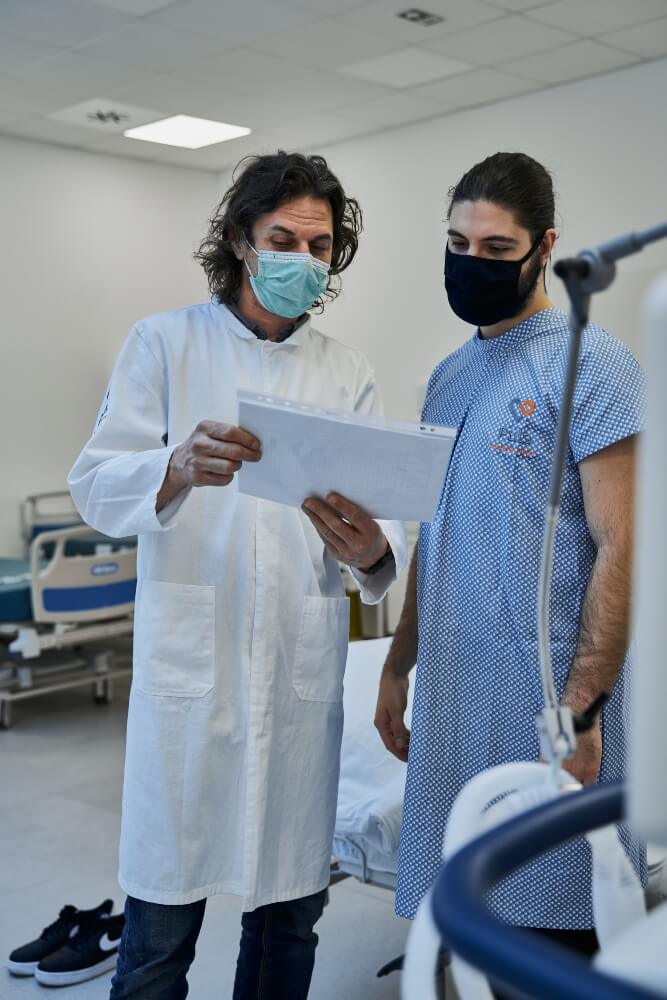The tendency to develop blood clots, as well as problems arising from their formation, can be evaluated through examinations conducted by a cardiologist.
If you require a cardiology examination in Belgrade, Cardiology Center Pulse offers fast and high-quality services.
Problems related to blood clot formation need to be diagnosed promptly, and treatment should be initiated as soon as possible. To achieve this, it is important to understand what a blood clot is and how to recognize the symptoms. Any discomfort indicating a blood clot should not be tolerated or ignored but should be promptly addressed, as when a blood clot reaches a blood vessel that it cannot pass through and causes a blockage, it can lead to heart attack, stroke, or pulmonary embolism, which can be life-threatening.
What is a thrombus?

A thrombus is a blood clot that forms as a result of the blood coagulation process. This process can be beneficial as it helps stop bleeding after an injury or intervention and protects wounds from bacterial invasion.
Blood clotting in such cases is natural and necessary. However, when this process is activated unnecessarily, without any wounds or injuries, it becomes pathological and poses serious health problems.
A thrombus can either be stationary or detach and move through the bloodstream. Both types carry a high risk to the health and life of the affected individual.
What is thrombosis?
Thrombosis refers to the formation of blood clots in blood vessels, which partially or completely obstruct normal blood circulation throughout the body.
Deep vein thrombosis (DVT) is a common type of thrombosis, characterized by the formation of a blood clot in the deep veins, most commonly in the lower leg region. However, it can also occur in the iliac and femoral veins. This condition can be effectively detected through a quick and simple ultrasound examination of the legs.
Risk factors for the development of blood clots
Several factors have been identified as potential triggers for the formation of blood clots, some of which can be influenced, while others cannot. However, it is important to prioritize monitoring one’s condition and attending regular check-ups, especially if belonging to high-risk groups for this problem.
The risk factors include the following conditions and habits:
- Hereditary factors (when someone in the family already has a diagnosed thrombosis or thrombophilia)
- Age (individuals over 60 years old are at higher risk compared to younger individuals)
- Gender (deep vein thrombosis, for example, is more common in women than in men, and one reason for this is that it often occurs in young women during pregnancy)
- Diabetes
- Any type of heart disease
- Obesity
- Smoking
- Pregnancy
- Estrogen therapy
- Certain injuries
- Tumors
- Use of oral contraceptives
- Chronic inflammations
- Inflammatory bowel diseases such as Crohn’s disease
- Covid-19
- Immobility
Symptoms of thrombus
The symptoms indicating the presence of blood clots that have blocked a blood vessel can vary widely because the blockage can occur at different locations.
Symptoms of deep vein thrombosis
Deep vein thrombosis most commonly occurs in the veins of the lower leg, but can also occur in the iliac and femoral veins. There may be no signs of deep vein thrombosis at all, but if they do appear, they are usually localized around the site of the blood clot.
In such cases, the following symptoms may occur:
- Warmth at the site of the problem
- Sensitivity or pain in the calf, thigh, or at the location of the clot
- Swelling in the leg affected by the affected vein
- Redness or the appearance of a bluish-purple color on the skin
- Pain resembling muscle strain
These symptoms will typically appear in one leg or in the specific area where the blockage has occurred.

Symptoms of pulmonary embolism
Pulmonary embolism is a very serious condition that can lead to fatal outcomes if the patient does not receive prompt and appropriate medical help.
It occurs as a complication of deep vein thrombosis when a blood clot dislodges and travels through the bloodstream to the lungs.
It can be recognized by the following symptoms:
- Sudden sharp pain in the chest, intensifying with inhalation.
- Shortness of breath and breathing difficulties.
- Fever.
- Coughing up blood.
- Dizziness.
- Sudden sweating.
- Rapid heartbeat.
Symptoms of arterial thrombosis
When a blood clot reaches certain arteries, signs that something is wrong will almost instantly manifest. This occurs because an organ is deprived of an adequate blood and oxygen supply, leading to a rapid reaction. This can be a cause of stroke or heart attack, so it is important to highlight the indications of these two conditions.
In these situations, the speed of seeking emergency medical assistance is of crucial importance. A heart attack or stroke can have a favorable outcome, but only if the patient reaches a healthcare facility as quickly as possible and receives assistance from trained and equipped individuals.
Symptoms of a stroke
- sudden numbness on one side of the body (face, arm, leg)
- inability to extend both arms
- problems with coordination and orientation
- difficulty speaking or understanding
- difficulty in movement
- dizziness
- loss of balance
- in women, additional symptoms may include: chest pain, general weakness, loss of consciousness, nausea, vomiting, hiccups, restlessness
Symptoms of a heart attack
- severe chest pain
- pain in the left side of the body
- discomfort in the stomach area
- heart palpitations – irregular heartbeat
- sweating
- dizziness
- in women, additional symptoms may include: unexplained fatigue, shortness of breath, anxiety, digestive disturbances, jaw pain.
Symptoms of abdominal thrombosis
- stomach pain
- vomiting
- diarrhea
How to diagnose a thrombus?
In the case of diagnosing deep vein thrombosis, patients can expect:
- examination by a specialist
- laboratory tests, including D-dimer
- ultrasound
For diagnosing pulmonary embolism:
- examination by a specialist
- D-dimer test
- chest CT scan
At the Pulse Cardiology Center, all these tests are available in one place, and the results are delivered quickly, allowing us to guarantee fast diagnosis and treatment.
What does the treatment involve?
The method of treatment and its duration will depend on the patient, their condition, and the risk of recurrent thrombosis. In most cases, patients are prescribed medications or injections that control coagulation and thin the blood. A large number of patients must deal with this issue long-term, regularly attend check-ups, and strictly follow the prescribed therapy.
Awareness and education about medical conditions, especially the most common and dangerous ones, are essential if we want to consciously improve our quality of life and preserve our health. Additionally, it should be emphasized that the role of prevention is crucial in the fight against these serious diseases. By adopting a healthy and balanced diet, engaging in regular physical activity, and avoiding habits such as smoking and excessive alcohol consumption, we build the best foundation for a long and carefree life.
We always take the opportunity to highlight the important role of preventive screenings in early detection and successful treatment of all diseases, particularly cardiovascular diseases. At the Pulse Cardiology Center, you have access to all the necessary tests and interventions related to heart and vascular diseases, as well as other services.
Explore our services, get to know our team of specialists, and schedule an appointment with us!






